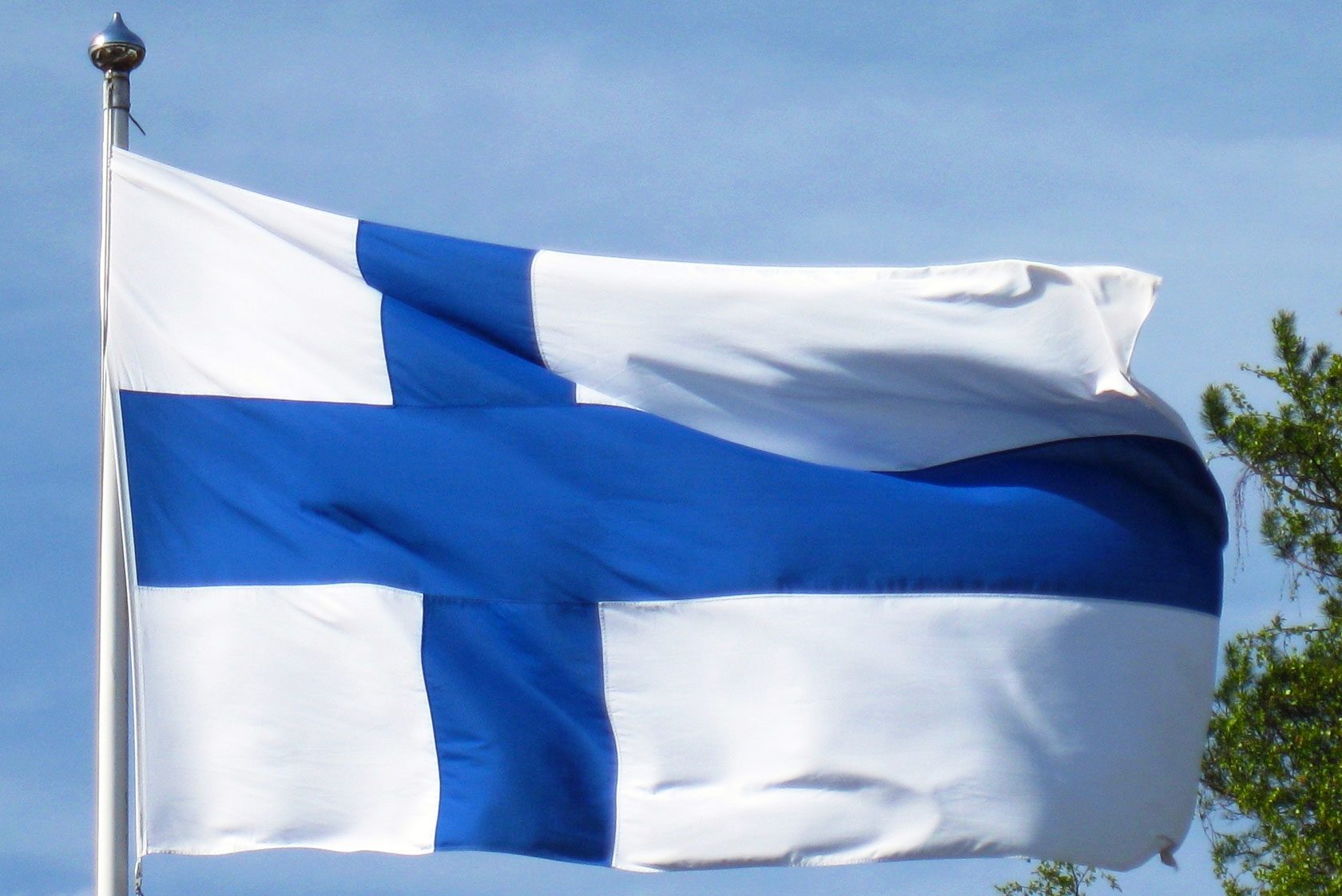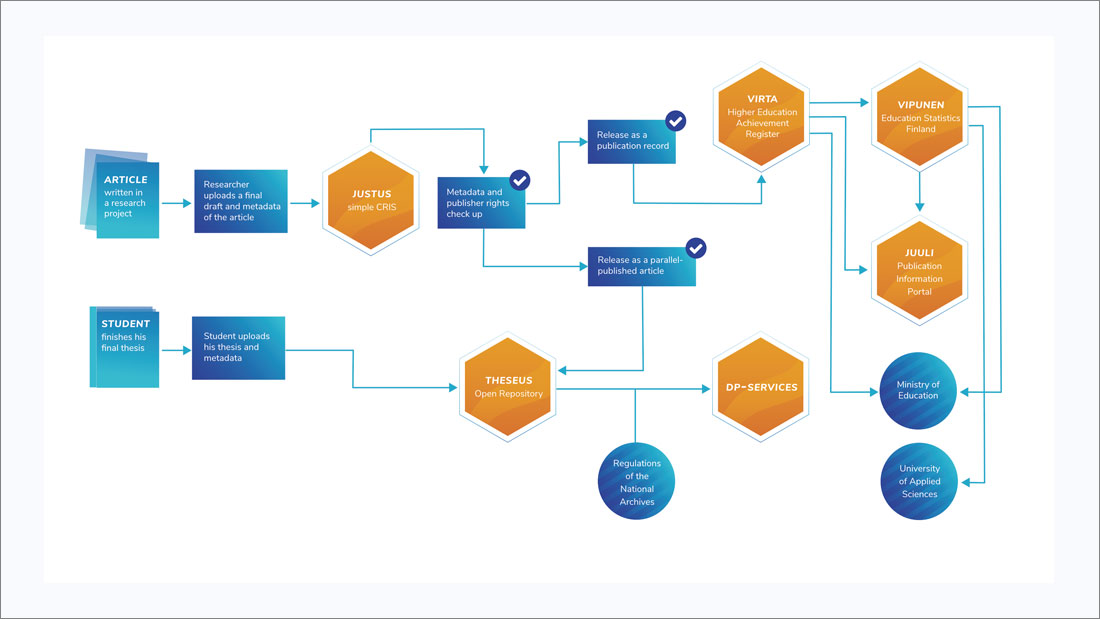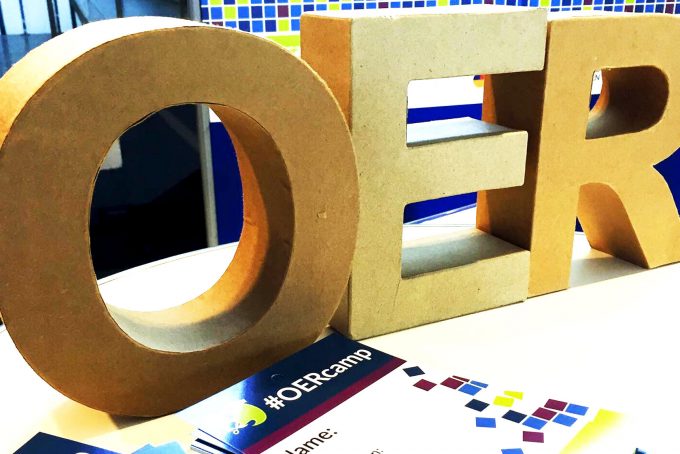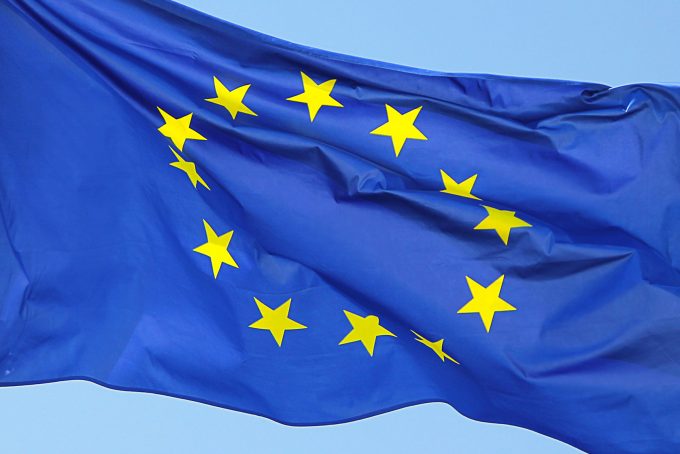
Open Access in Finland: How an Open Repository Becomes a Full Service Open Publishing Platform
Universities across Europe are tackling the same open science challenges with constantly diminishing resources. The need for improved open publishing services is obvious if the universities are to meet the ambitions of the European Union to publish 100% openly by the year 2020. Sometimes making a game plan might seem a too big objective for small universities. In Finland the problem was solved by a joint approach by 25 Universities of Applied Sciences (UAS). Joining forces has already created good results.
by Tiina Tolonen and Minna Marjamaa
To foster open access in Finland, universities have decided to join forces and develop a full service platform for open publishing. Tiina Tolonen and Minna Marjamaa of the AMKIT-Konsortium outline the case of 25 Universities of Applied Sciences in Finland for us.
European Union and National requirements for open access – how to achieve it?
By the year 2020 one rule of Horizon 2020 must be followed:
- Open access is mandatory either through a repository or directly by publishing in open access to peer-reviewed publications. Depositing in a repository is mandatory either way you proceed.
At the same time by the year 2020 Finnish universities are required to publish 100% open access.
Theseus, a success story of its time
As early as in 2009, Universities of Applied Sciences (UASs) in Finland launched an open repository named Theseus for theses and research publications.
The 25 UASs with the same policies and one common helpdesk with modest expanses was something very new at that time. Currently, Theseus is the biggest open repository in Finland with almost 160,000 Bachelor’s and Master’s theses uploaded, which makes it quite a success story as such.
Still, the amount of research publications and self-archived articles didn’t increase as much as planned after the OA mandate given in 2009. Furthermore, the reporting of publications to the Ministry of Education was being done in a time consuming way without any CRIS. Accordingly, the long-term preservation and archiving required by legislation had great variation and was mostly organized in printed format. At the same time, The National Archives of Finland demand all universities to archive their theses in digital long-term preservation (DP). Something needed to be done – together again.
To meet the European Union open access goals and on the other hand the lack of resources, we decided to join forces again: A new initial was started together with 25 Universities of Applied Sciences, the National Library of Finland, CSC (IT Center for Science in Finland) and Finnish National Archives. The new service was launched in May 2019.
Simple CRIS to solve the common problems
The new service is an open repository connected by a very simple CRIS called Justus with the Finnish National Publication Information Service as well as with the national digital long-term preservation (DP). Justus is a publication information reporting service, which enables direct inputting of information to VIRTA publication information service, a data warehouse of Finnish publication information.

When a staff member is reporting his or her article to the university, he or she will upload the final draft to Justus. The report will thus reach both Theseus Open Repository and the Ministry of Education at the same time as well as statistics services for the universities.
VIRTA Publication Information Service is an advanced data warehouse solution to integrate institutional data at the national level that was launched in the spring 2016. VIRTA is a data hub that comprises the bibliographic information of all scientific publications.
The integration of the simple CRIS to the open repository saves resources by streamlining the process and helps report publications to the Ministry of Education. This was expected to lead to a growing number of self-archiving as the process is being made easier.
As a part of the reform, the UAS theses will also be exported to the DP services. The connection to the DP services will meet the requirements of an operative e-archive described by the National Archives System in Finland and provide a transfer to long-term preservation by the National Library of Finland.
Was it worth it?
After the introduction of the simple CRIS in May 2019 the self-archiving process has started on a larger scale already. However, the actual results can not be assessed earlier than by the early 2020 when the statistics of the year 2019 are available. Ideas for further developments of the simple CRIS into a real CRIS are being developed: For example attaching an HR system to Justus to identify authors with affiliations and to enrich the publications with the further information available in the data warehouse of Finnish publication information.
Furthermore, we are planning to expand the helpdesk services for the 25 Universities of Applied Sciences beyond open publishing questions to other open data and open learning questions in the year 2020. The joint initiative has proved to be worth developing further and still, it is quite an extraordinary phenomenon on its scale, with its modest expenses and resources.
Tiina Tolonen works as Service Manager at the Oulu UAS Library. She has also been working for AMKIT Consortium as Theseus helpdesk officer since 2010.
Minna Marjamaa works as an Information Specialist at the Laurea University of Applied Sciences. She has also been working for AMKIT Consortium as Theseus helpdesk officer since 2010 and is keenly interesting in open science.
View Comments

Open Access: AfricArXiv Facilitates Knowledge Exchange Between Africa and Europe
Fostering transparency, open access and global dialogue in research are crucial to...



